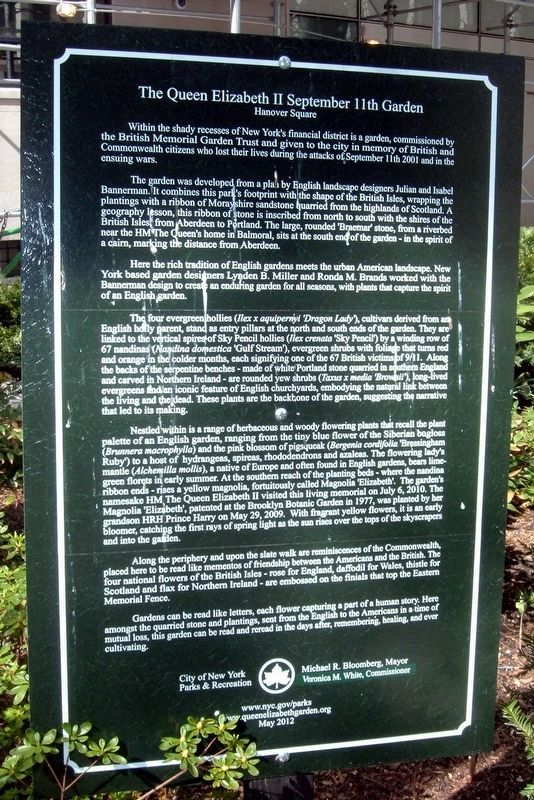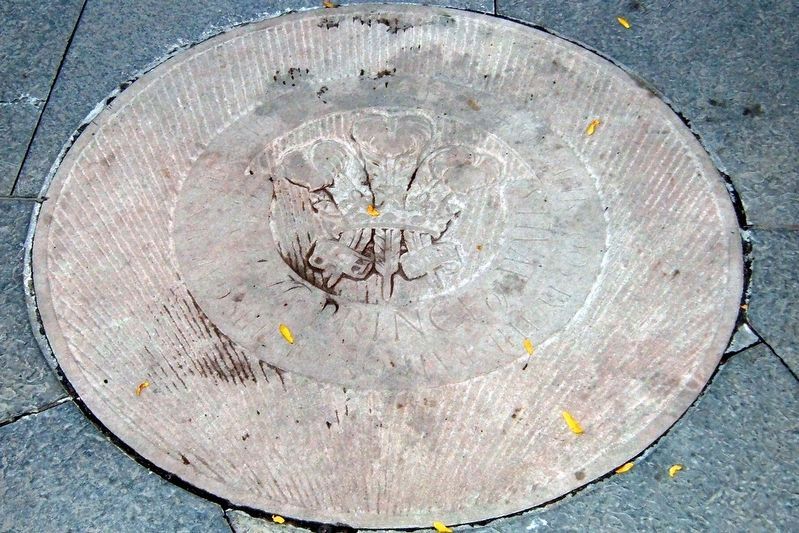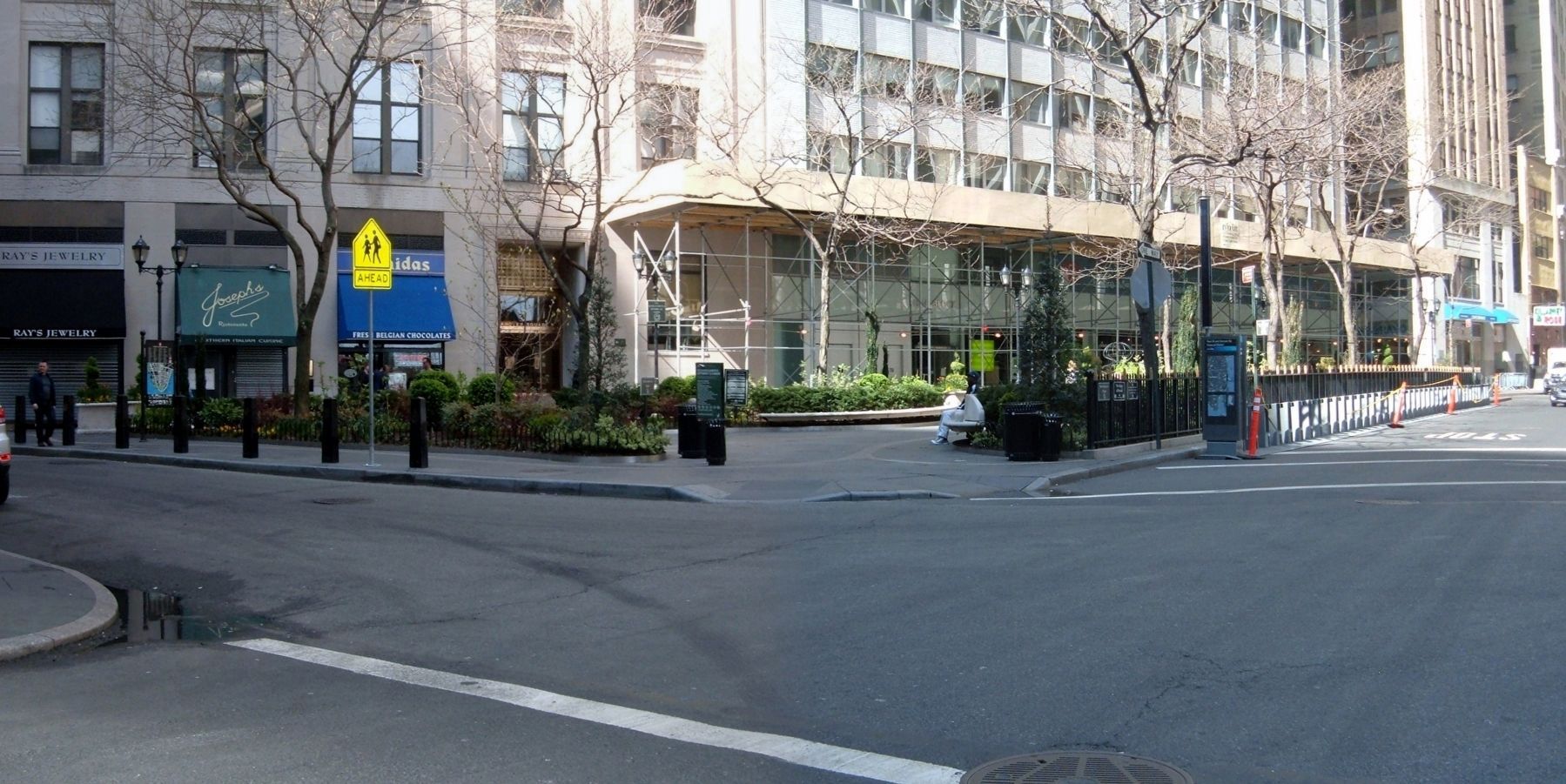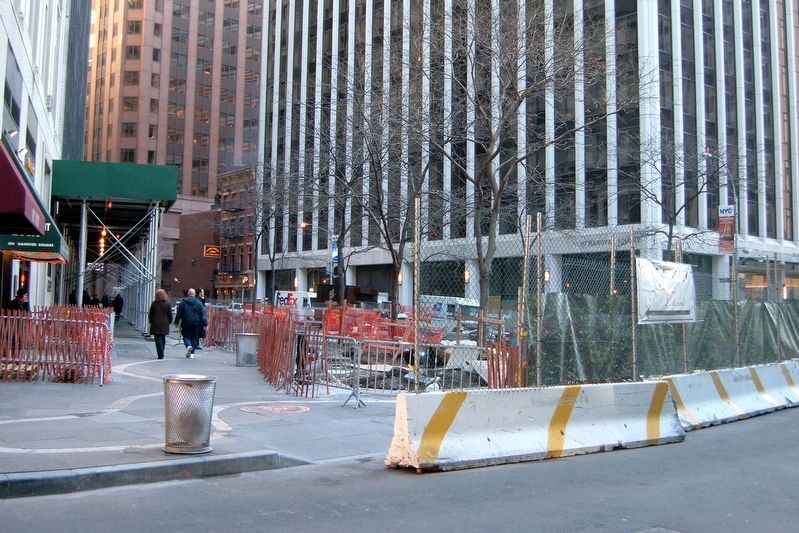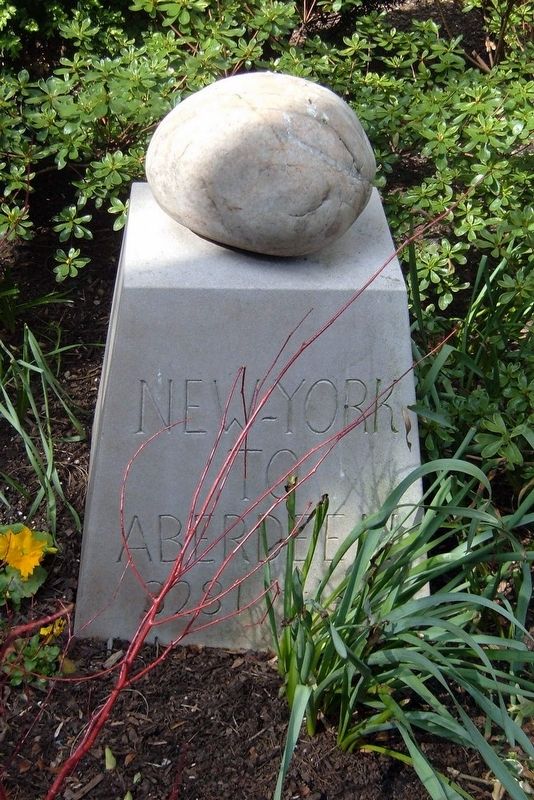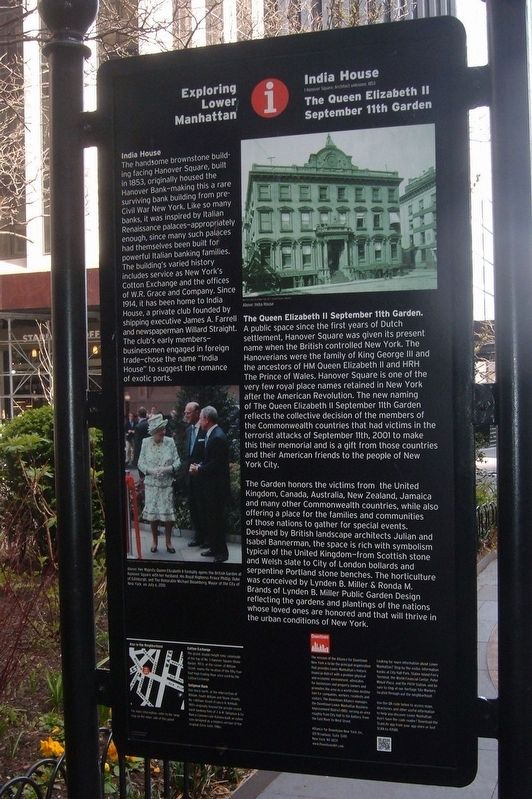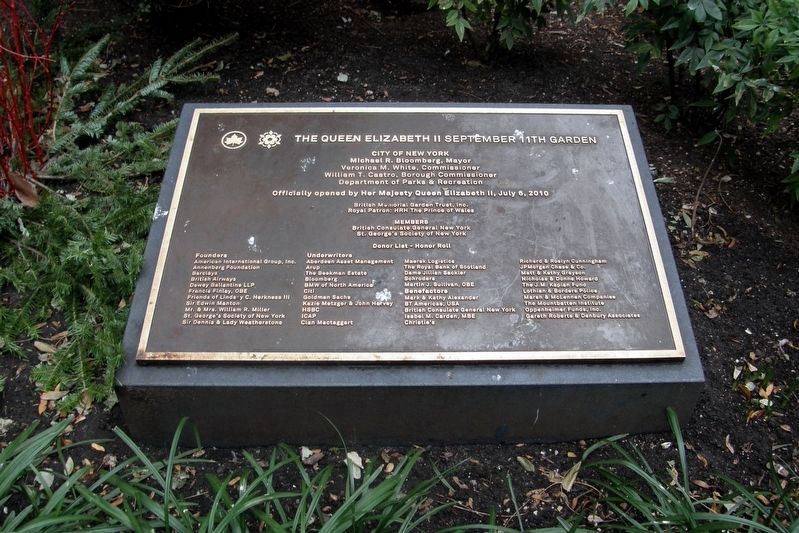Financial District in Manhattan in New York County, New York — The American Northeast (Mid-Atlantic)
The Queen Elizabeth II September 11th Garden
Hanover Square
Inscription.
Within the shady recesses of New York’s financial district is a garden commissioned by the British Memorial Garden Trust and given to the city in memory of British and Commonwealth citizens who lost their lives during the attack of September 11 2001 and in the ensuing wars.
The garden was developed from a plan by English landscape designers Julian and Isabel Bannerman. It combines this park’s footprint with the shape of the British Isles, wrapping the plantings with a ribbon of Morayshire sandstone quarried from the highlands of Scotland. A geography lesson, this ribbon of stone is inscribed from north to south with the shires of the British Isles from Aberdeen to Portland. The large rounded ‘Braenar’ stone, from a riverbed near the HM The Queen’s home in Balmoral, sits at the south end of the garden – in the spirit of a cairn, marking the distance from Aberdeen.
Here the rich tradition of English gardens meets the urban American landscape. New York based garden designers Lynden B. Miller and Ronda M. brands worked on the Bannerman design to create an enduring garden for all seasons, with plants the capture the spirit of an English garden.
The four evergreen hollies (Ilex x aquipernyi ‘Dragon Lady’), cultivars derived from an English holly parent, stand as entry pillars at the north and south ends of the garden. They are linked to the vertical spires of Sky Pencil hollies (Ilex crenata ‘Sky Pencil’) by a widening row of 67 nandinas (Nandina domestica Gulf Stream’), evergreen shrubs with foliage that turns red and orange in the colder months, each signifying one of the 67 British victims of 9/11. Along the backs of the serpentine benches – made of white Portland stone quarried in southern England and carved in Northern Ireland – are rounded yew shrubs (Taxus x media ‘Brownii’), long-lived evergreens and an iconic feature of English churchyards, embodying the natural link between the living and the dead. These plants are the backbone of the garden, suggesting the narrative that led to its making.
Nested within is a range of herbaceous and woody flowering plants that recall the plant palette of an English garden, ranging from the tiny blue flower of the Siberian bugloss (Brunnera macrophylla) and the pink blossom of the pigsqueak (Bergania cordifolia ’Bressingham Ruby’) to a host of hydrangeas, spireas, rhododendrons and azeleas. The flowering lady’s mantle (Alchemilla mollis), a native of Europe and often found in English gardens, bears lime-green florets in early summer. At the southern reach of the planting beds – where the nardina ribbon ends – rises a yellow magnolia, fortuitously called Magnolia ‘Elizabeth’. The garden’s namesake HM, The Queen Elizabeth II visited this living memorial on July 6, 2010. The Magnolia ‘Elizabeth’, patented at the Brooklyn Botanic Garden in 1977, was planted by her grandson HRH Prince Harry on May 29, 2009. With fragrant yellow flowers, it is an early bloomer, catching the first rays of spring light as the sun rises over the tops of the skyscrapers and into the garden.
Along the periphery and upon the slate walk are reminiscences of the Commonwealth, planted here to be read like mementos of friendship between the Americans and the British. The four national flowers of the British isles – rose for England, daffodil for Wales, thistle for Scotland and flax for Northern Ireland – are embossed on the finials the top the Eastern Memorial fence.
Gardens can be read like letters, each flower capturing a part of a human story. Here amongst the quarried stone and plantings, sent from the English to the Americans in a time of mutual loss, this garden can be read and reread in the days after, remembering, healing, and ever cultivating.
Topics. This historical marker is listed in this topic list: Horticulture & Forestry. A significant historical date for this entry is May 29, 2009.
Location. This marker has been replaced by another marker nearby. It was located near 40° 42.283′ N, 74° 0.564′
W. Marker was in Manhattan, New York, in New York County. It was in the Financial District. Marker could be reached from William Street near Pearl Street. The marker is inside the park. Touch for map. Marker was in this post office area: New York NY 10005, United States of America. Touch for directions.
Other nearby markers. At least 8 other markers are within walking distance of this location. A different marker also named The Queen Elizabeth II September 11th Garden (a few steps from this marker); India House / British Memorial Garden in Hanover Square (a few steps from this marker); The Cotton Exchange (a few steps from this marker); Delmonico's Building (within shouting distance of this marker); 57 Stone Street (about 300 feet away, measured in a direct line); 13 South William Street (about 300 feet away); First Precinct Police Station (about 300 feet away); First Printing Press in the Colony of New York (about 300 feet away). Touch for a list and map of all markers in Manhattan.
Related marker. Click here for another marker that is related to this marker. This marker has been replaced with the linked marker.
Also see . . . The Queen Elizabeth II September 11th Garden. Official NYC Park description of the park and features. (Submitted on April 13, 2020, by Larry Gertner of New York, New York.)
Credits. This page was last revised on January 31, 2023. It was originally submitted on December 14, 2018, by Larry Gertner of New York, New York. This page has been viewed 278 times since then and 24 times this year. Photos: 1, 2, 3, 4, 5, 6. submitted on December 14, 2018, by Larry Gertner of New York, New York. 7. submitted on December 15, 2018, by Larry Gertner of New York, New York. • Andrew Ruppenstein was the editor who published this page.
